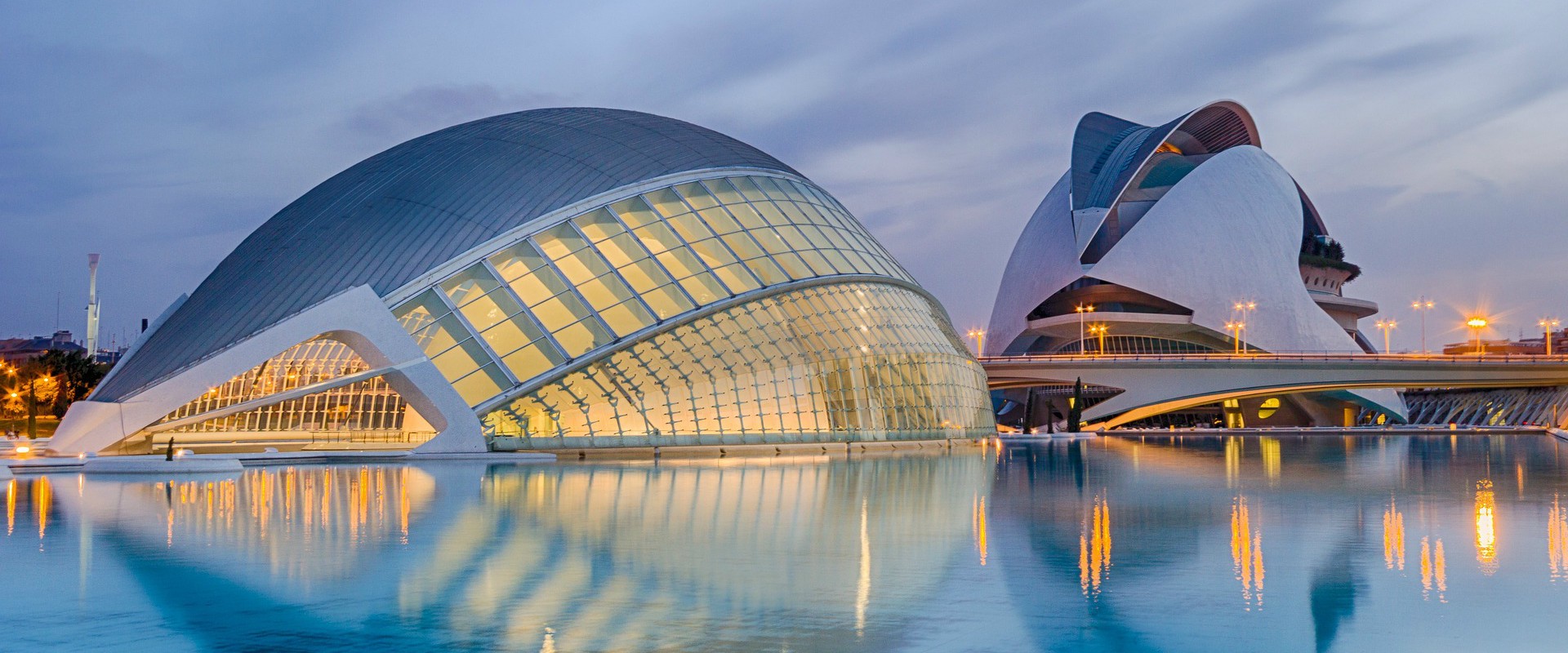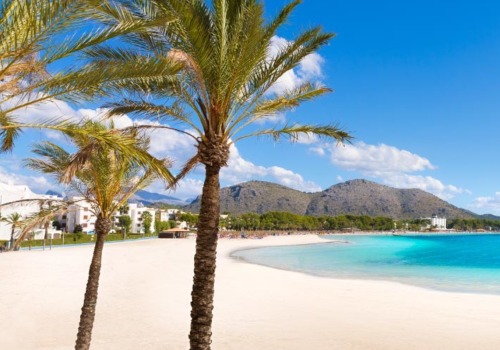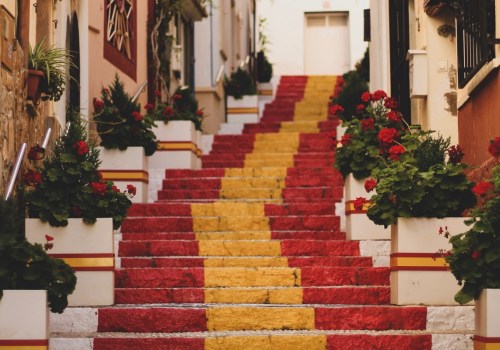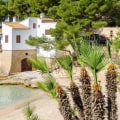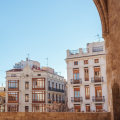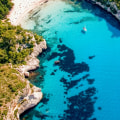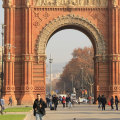Spain is one of the main tourist destinations in the world. Its wide range of tourist resources and attractions, its hotels, the friendliness of the Spanish people and a highly professional tourism industry lead 75 million international tourists to select Spain as their destination every year. Spain is possibly the only country in Europe that boasts and cares for its architectural relics as its nation's heritage. The cities of Spain are known to be ideal for romantic tourism, so they are visited all year round by tourists from all over the world.
Spain truly has it all, from incredible landscapes and beaches to world-famous cuisine and rich history, not to mention the fantastic museums and stunning architecture. These are just some of the reasons why you should visit it at least once in your life. You have to try tapas in Spain at least once in your life, and realize that it's probably very different from the food offered at your local tapas restaurant at home. San Sebastian's pintxo scene is world famous, its bars serve delicious food, much of it in bite-sized portions on a slice of baguette.
Order a drink in many bars in Spain and you will receive a free plate of tapas, an excellent tradition that any other country should seriously consider adopting. Spain is known for its seafood, ham (cured ham), abundant and fresh fruits and vegetables, which make a trip to the local market a feast for the eyes and the stomach. From Seville's Gothic cathedral (the largest in the world) and Gaudí's many masterpieces in Barcelona, to Frank Gehry's iconic Guggenheim Museum in Bilbao and Santiago Calatrava's City of Arts and Sciences in Valencia, Spain is brimming with incredible architecture that embraces both its rich history and its future - think about modernism. You will be redirected to your dashboard shortly.
We will also call you back within 24 hours. Festivals in Spain are also incredibly extravagant; the famous Pamplona bull race and La Tomatina (the tomato fight in Bunol) are already bizarre, and only become more unusual from there. Las Fallas fill Valencia with giant statues of cultural icons and then burn them, La Tamborrada sees people playing drums in the streets of Seville for 24 hours straight, the Haro Wine Festival is a big wine fight and people line up to jump over the bonfires during The Arizkun Festival. Celebrating festivals is an important part of Spanish culture, and seeing any of them will be a unique and unforgettable experience.
He is a world traveler and has already visited more than 30 countries. Traveling inspires you to write, research and take beautiful photographs. The gardens of the Alhambra and the Generalife, Granada Construction materials of Roman and Visigoth buildings were used in the construction, which began in 785, and by 1000 had grown to its current dimensions, its prayer hall with no less than nineteen corridors. No matter where you are or in which direction you look, its rows of columns and rounded Moorish arches line up in symmetrical patterns.
San Lorenzo de El Escorial, about 45 kilometers northwest of Madrid, was the summer home of the kings of Spain, and in 1563, work began here on a huge complex, which would include a monastery, a church, a royal palace, a mausoleum, a library and a museum, all conceived as a monument to Philip II and his reign. The result is an impressive collection of attractions, built around 16 courtyards, their rooms and structures connected by 16 kilometers of corridors. At its core is the church, whose highlight is the 30-meter-high altarpiece of Herrera, made of jasper and red marble and accessed by a stretch of 17 steps. La Giralda tower, Seville Cathedral and Alcázar combine to form a UNESCO World Heritage Site.
The tower is a minaret, a masterpiece of Almohad architecture, according to UNESCO. The cathedral has more interior space than St. Peter in Rome and a 37-meter high altar of carved statues completely covered with gold. The opposite Alcazar was started by the Moors in 712 and continued after the Christian reconquest by King Pedro in the 1300s in the ornate neo-Moorish style called Mudejar.
The rooms and lounges are stunning, and the gardens are a pleasure to stroll, shaded by fragrant orange and lemon trees. To the east is Santa Cruz, the old Jewish Quarter, a neighborhood of whitewashed houses, iron balconies and courtyards full of flowers. One of the most outstanding monuments of early Romanesque architecture, the cathedral was built between 1060 and 1211, and despite the Baroque transformation of the exterior in the 16th to 18th centuries, the interior remains in the purest early Romanesque style. You'll see these two periods at play as you enter the western front, through one of the most impressive church facades in Spain.
Enter to look towards the Portico de la Gloria, part of the old west front now hidden by the 18th century façade. This triple door is one of the largest and most magnificent collections of Romanesque sculpture in the world. The heartbeat of Spain's vibrant capital, Plaza Mayor, has played an important role in Madrid's life since the 16th century, when Philip II entrusted the task of designing it to his favorite architect Juan de Herrera, builder of El Escorial. Built for the Ibero-American Exhibition of 1929 to celebrate the regions of Spain, the Plaza de España is an impressive semicircular pavilion surrounded by colonnades.
Beautiful panels of colored tiles representing each of the provinces of Spain overlook the long swimming pool, which is crossed by bridges. It's a popular spot for strolling or paddling on a rental boat around the pool and under bridges. The largest and most lively beach is Playa Inglés in Maspalomas, which abounds with cafes, restaurants, shops, playgrounds and other attractions. At one end is one of the natural wonders of the archipelago, a vast protected area of gigantic sand dunes.
These reach a height of up to 12 meters and change constantly as they are shaped by the wind and the sea. To complete the illusion of the desert, you can ride a camel through this desolate and unearthly landscape. You can explore El Teide in several ways. You can drive or walk inside the caldera, the crater floor, 12 miles in diameter and an arid lunar landscape of colorful rock formations that is like driving towards the center of the earth.
You can climb the Teide cone, but an easier way to get close to the top is by taking an eight-minute cable car ride. On a clear day, the views cover the entire archipelago and can extend to North Africa, the closest land mass to the Canary Islands. The most spectacular is Arcos de la Frontera, whose square next to the Gothic church ends vertiginously on a 137-meter cliff, which overlooks a valley of olive, orange and almond trees. Its labyrinth of winding cobblestone streets lead to cafes and craft shops selling pottery and ceramics to a Moorish castle.
A total of 19 of these villages with small white houses are located in the vicinity of the Grazalema Nature Reserve. Grazalema and Zahara de la Sierra are two others worth seeing. A good starting point in the region is Jerez de la Frontera, home of flamenco and Andalusian thoroughbreds. See the precision ballet of these horses at the Royal Andalusian School of Equestrian Art and, to enjoy authentic flamenco, visit the Flamenco Cultural Center.
This year, 72 million people have visited Spain, making it the third most popular tourist destination in the world. Spain is home to some beautiful islands, from the cheerful island of Ibiza and the volcanic landscapes of Tenerife to the quiet Menorca and Graciosa in the Canary Islands, where the streets are made entirely of sand. From the popular Costa del Sol in Andalucіa in outhern Spain to the return of the northeatern Mediterranean region of Catalonia, there are hundreds of beshede blue flag quality. Santo Toribio de Liébana, Cantabria (also in northern Spain) is fourth, followed by Caravaca de la Cruz in the southeast, (fifth holiest place).
After Switzerland, Spain is the country with the highest number of Alps and mountains in Europe, making it an excellent place to practice winter sports in ski resorts. From its rich Moorish past and its position as a global superpower during the Golden Age, to the horrors of the Spanish Civil War, the dictatorship and the country's successful return to democracy, Spain has a fascinating history that is well preserved in its buildings and museums. Despite all the positive turns in the Spanish travel market, from the boom in gastronomic tourism to LBGT and 'Bleisure', 5.8 million Britons still head to sunny Spain every summer. With the Spanish economy rebounding and many international companies and investors returning to Spain, there is a growing market made up of professional and wealthy visitors who want to combine their business trip with a vacation.
Spain is a generally mountainous country, with well-known ski resorts located in various parts of the country, including the Pyrenees, the Central System, the Iberian System and Sierra Nevada. To date, Spain has a total of 15 National Parks, of which 10 are located on the peninsula, 1 in the Balearic Islands and 4 in the Canary Islands. Not only the buildings, but the museums, the art rooms and the aquarium (by Félix Candela and the only building not designed by Calatrava) form a series of tourist attractions that are among the most popular in Spain. With many tourist destinations around the Mediterranean plagued by economic and political turmoil, and some by terrorist threats, Spain is now a safe haven for tourists.
Wіth thAtlantic Oseân located to the north and Médіterraneãn is to the south and east, Spain never fails to provide you better travel on beach holidays. Last but not least, there is the continuing importance of family vacations in Spain; all-inclusive holidays, inexpensive vacations that Spain has offered year after year since the 1960s. The other two museums are the Thyssen Bornemisza Museum, established from a mixed private collection, and the Reina Sofía Museum, where Pablo Picasso's Guernica hangs, who returns to Spain from New York after more than two decades. Meliá, which has many luxury hotels in the main cities of Spain, now uses the term “Bleisure” to describe this accommodation.
. .
